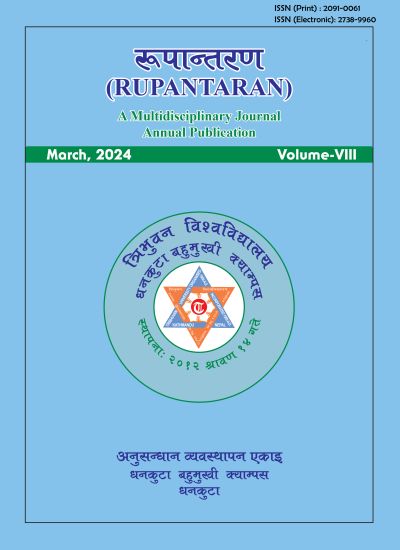The Dynamics of Electricity Consumption in the Economic Prosperity of Nepal
DOI:
https://doi.org/10.3126/rupantaran.v8i01.65199Keywords:
Dynamics, electricity consumption, hydropower, economic prosperityAbstract
The paper examines the relationship between the dynamics of electricity consumption and Nepal's economic prosperity. Descriptive methodologies and statistical tools are used in this quantitative study that gathers data from secondary sources. The patterns of power consumption are influenced by population increase, urbanization, government regulations, and technical developments, all of which affect Nepal's economic development and social well-being. This paper uses an interdisciplinary approach to show how crucial it is to address energy-related issues to realize socioeconomic potential. Economic growth is the main factor driving the dynamic of power consumption. The finding reveals that the autonomous electricity consumption is 4.13 kilowatt hours shows if income increases by USD 100, the estimated increase in average electricity consumption is 54 kWh. Indicates that increase in per capita income, increases the consumption of electricity, and economic growth are strongly correlated. The result from the forecast analysis shows that the unrestrained demand for electricity is projected to increase from an estimated 7,888 million kilowatt-hours (million kWh) in 2019–2020 to 13,831 million kilowatt-hours in 2029–2030 which seems closer and validates the Electricity Demand Forecast for 2014 to 2040 by Government of Nepal. The result shows that the dynamics of electricity consumption and economic prosperity are strongly correlated. Policymakers, energy planners, investors, and other stakeholders must acknowledge the issue and make a call to action to support initiatives that enhance economic growth, access to energy, and sustainable energy use.
Downloads
Downloads
Published
How to Cite
Issue
Section
License
© Research management Cell (RMC); Dhankuta Multiple Campus, Dhankuta; Province-1, Nepal

